Battle for Sievierodonetsk. How Ukraine is defending the city and whether it will be able to hold onto it
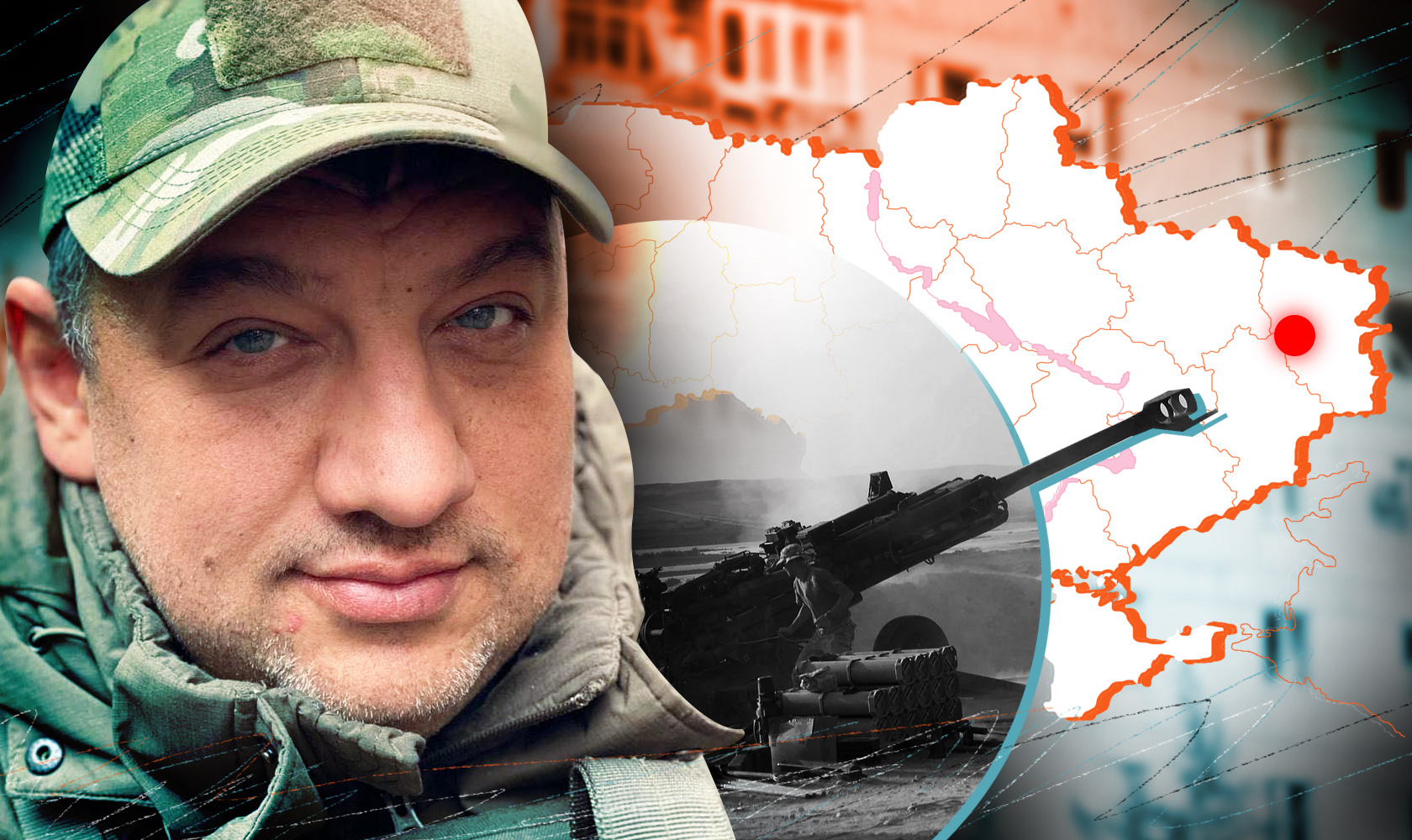
The article made a serious mistake concerning the indication of the type of brigade stationed in Sievierodonetsk. The 115th Separate Mechanised Brigade of the Armed Forces of Ukraine was stationed in the city, and not the 115th Brigade of the Territorial Defence Forces - UKRAINSKA PRAVDA.
A month ago, it was still possible to drive to Sievierodonetsk in the Luhansk region by car, although there was a risk of getting a puncture from shell fragments or coming under Russian artillery fire.
Now it is possible to get to the city only by swimming across the Siverskyi Donets [river] - all the bridges have been destroyed by the Russian army. Since the end of May, Sievierodonetsk has been the location of the most intense fighting on the front.
Fierce fighting has been taking place in the city that once had a population of 100,000 and was known for its production of ammonia and nitrogen fertilisers at Firtash's Azot plant [Dmytro Firtash, a Ukrainian oligarch, who faces bribery-related charges in the U.S. and is fighting extradition from Vienna, where he has been since 2014] and the separatist congress in the now-destroyed Lodovyi palats [Ice Palace] [On 28 November, 2004, the so-called All-Ukrainian Congress of Deputies of All Levels was held in Sievierodonetsk, attended mainly by representatives of the pro-Russian Party of Regions, with the attempt to divide Ukraine].
Occupying forces quickly seized the residential areas of Sievierodonetsk and at the same time tried to take control of the Bakhmut-Lysychansk road, which is important for Ukrainian defenders and the evacuation of civilians, creating a real threat that Ukrainian soldiers would be encircled.
However, even after several weeks of intensified offensive, Russian forces failed to do this.
It is no exaggeration to say that the Armed Forces of Ukraine, the National Guard and other units are currently heroically holding the front line in Sievierodonetsk, and are moving it, step by small step, "with every house", as the military personnel themselves say, from the industrial zone into the city.
As of the evening of 14 June, according to the Ukrainska Pravda sources in the military, the Ukrainian defenders control about 40% of the city, while the occupiers control about 60%.
But this is only a public part of a great story called the Battle for Sievierodonetsk. In fact, this story began when soldiers of the 115th Separate Mechanised Brigade (the brigade’s name was earlier erroneously given as the "115th Brigade of the Territorial Defence Forces", which is unrelated to this situation - ed.) abandoned their positions en masse, and [now this story] continues with daily losses.
A few days ago, Ukrainska Pravda returned from the Luhansk region, where it had the opportunity to ask soldiers of the Svoboda battalion of the National Guard, one of the few units that publicly speaks about its presence in the city, about the defence of Sievierodonetsk.
Not an easy beginning
The active phase of the battle for Sievierodonetsk began in rather unfavourable conditions for the Ukrainian military.
As Ukrainska Pravda has learned, the 115th Separate Mechanised Brigade (the brigade’s name was earlier erroneously given as the "115th Brigade of the Territorial Defence Forces", which is unrelated to this situation - ed.), which has been defending one of the most important areas in Sievierodonetsk since the beginning of April, left its positions without being ordered to do so. Their area of responsibility was right near the famous Mir Hotel and along the forest from where the Russians were advancing. As a result, on 27 May, the Russian sabotage and reconnaissance group broke into the same hotel, and on 30 May, the Russians entered the outskirts of the city.
Yurii and Vitalii, two fighters from different company of the 115th Separate Mechanised Brigade (the brigade’s name was earlier erroneously given as the "115th Brigade of the Territorial Defence Forces", which is unrelated to this situation - ed.), who had been defending Sievierodonetsk for more than 50 days, told Ukrainska Pravda sincerely that, after consulting with their commanders, their platoons "decided to leave the city." All Vitalii's acquaintances from the 115th Separate Mechanised Brigade (the brigade’s name was earlier erroneously given as the "115th Brigade of the Territorial Defence Forces", which is unrelated to this situation - ed.) did the same, but he assumes that someone might have stayed in position.
One battalion even withdrew their positions, swimming out of the city [as the bridges were destroyed].
Yurii and Vitalii explain their decision and the decision of their military comrades [to leave the city] as due to lack of combat experience - most of the fighters had never held a weapon before "training" - lack of ammunition and lack of artillery support.
"We asked the command: what should we do next - our positions are destroyed. They would say: "Get back to the position!" Which one? They would say: "Dig trenches!" How to dig them when helicopters and planes are taking off twice a day [and firing on you], and Grad multiple rocket launchers are firing [on you]?
And we decided: guys, we don’t want to be cannon fodder. We got into the cars we had and left. We went straight to the military prosecutor's office in the city where we evacuated, and after that the thought that we were deserters began to weigh on us ," said Yurii.
Both men are currently waiting for a decision from law enforcement.
"I am pissed off by the brigades that get into this war pointlessly and lose their lives. There are other units, which are also 90% full of civilians, which did not surrender their positions," Oleksandr Martynenko, a scout from Svoboda [Battalion], told Ukrainska Pravda.
"If these brigades were mixed with brigades that have combat experience, we would still be holding Rubizhne [Luhansk Oblast]. We need to scream about this," he added quietly later.
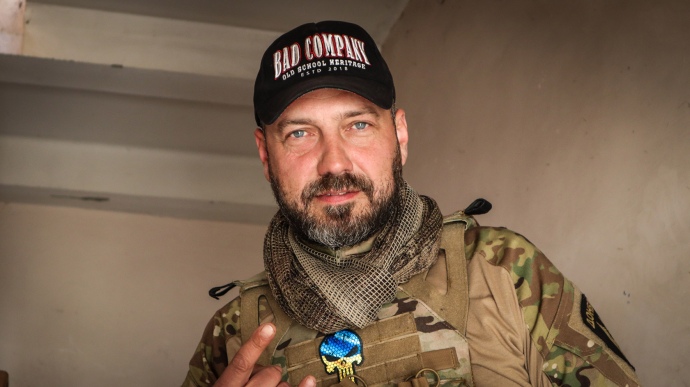
The Svoboda battalion defenders moved into the area surrounding Sievierodonetsk, and later to Sievierodonetsk itself immediately after serving in another hot spot - Rubizhne [Luhansk Oblast]. There, [in Sievierodonetsk], they were ordered to hold the defence as long as it was possible and, if possible, to counterattack.
"The 115th [the 115th Separate Mechanised Brigade] left its positions, the Russians entered the city, but there was a conditional line that they had not yet reached. We entered the building, which was defined as a command and observation post, began to set up observation posts there, set up a line, and formed a front.
20 minutes later, as we set up people there, three Russians came along (super relaxed - Ukrainska Pravda) - they were immediately eliminated. They walked as if they were at home - maybe someone told them that they had completely occupied Sievierodonetsk? " recalls Maksym Lutsyk, an air reconnaissance defender from Svoboda battalion.
However, Russian forces have not yet managed to seize Sievierodonetsk completely. The Ukrainian defenders are pushing them into the city centre.
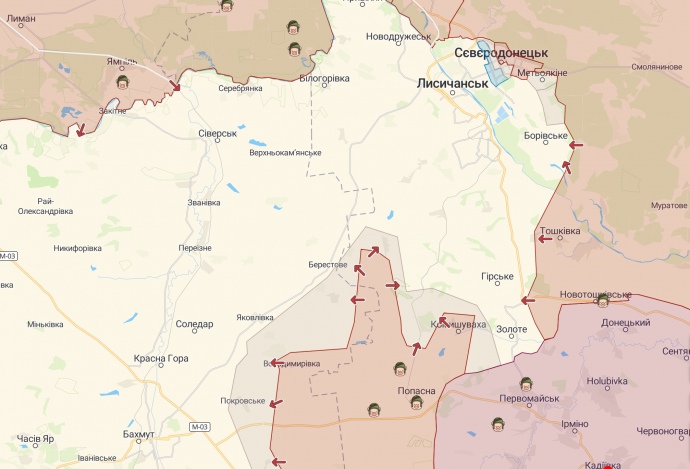
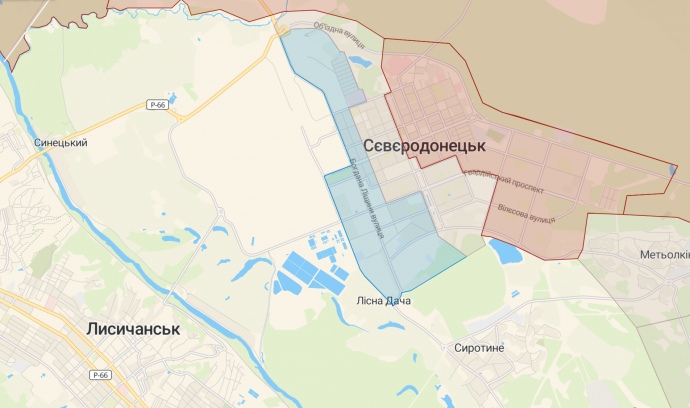
"We save every tank": how the fighting in Sievierodonetsk takes place
Petro Kuzyk was one of the first military personnel to publicly say in an interview with Ukrainska Pravda in late May that the lack of parity of armaments in the Donbas was preventing Ukraine from being able to drive the Russians out of Ukrainian cities. This problem still exists.
In Sievierodonetsk, the Russian army has a significant advantage in terms of artillery, tanks and aviation. The Russians fire from 80 [millimetres] and 120 [millimetres] mortars, 2S7 Pion [Peony] guns, and Grad multiple rocket launcher systems. Their batteries are positioned in a semicircle in the occupied villages, 20-30 kilometres from the city, and they are subjecting Ukrainian positions to intense fire using shells and missiles.
"After Rubizhne, we changed tactics. We tried to mix with their infantry so that their artillery would not hit us. It worked for a day or two, and then their artillery started firing at both their own and our [soldiers] - they don’t care about their manpower," says Kuzyk.
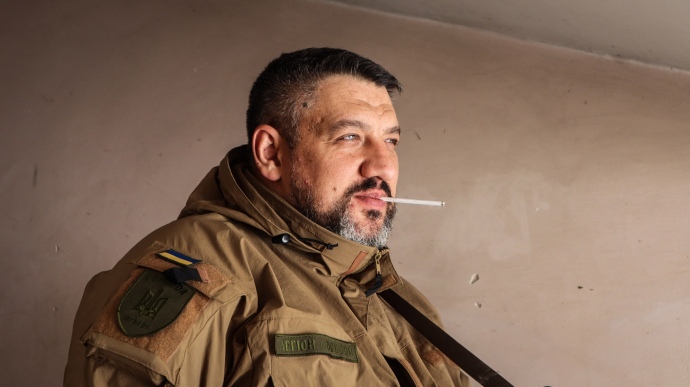
Also, the Russians can use aviation whenever they like. This meant that Svoboda battalion survived three air strikes in Rubizhne.
For its part, the Ukrainian military is just beginning to receive the weapons promised by the West, for example, 155-mm M777 howitzers have appeared at the front. But they are too few to enable a counterattack.
"We are happy when we burn up 2-3 of their tanks, but for them, unfortunately, this is not a problem at all. The next day they will disable 6 [of their own]. And we take care of each [Ukrainian] tank," explains Kuzyk.
The quality of Ukrainian air reconnaissance, infantry and special forces give them an advantage in Sievierodonetsk. [Another advantage], Kuzyk says, is its technological support (thermal imagers, optical sights, high-precision rifles, which are mostly supplied by volunteers, etc.).
Most battles are conducted using the artillery, i.e. from a distance. The Russians are trying to avoid direct contact [with Ukrainian defenders]. The Russian infantry has neither the motivation nor the desire to storm Ukrainian positions.
Their infantry and special forces, according to Ukrainian intelligence officers live in local [residential] houses and "sleep in clean beds", given their location in residential areas.
Sometimes the distance between the positions [of Ukrainian and Russian soldiers] is less than 500 metres, making a sort of "counter-strike" inevitable.
"I like that here [in Sievierodonetsk] the story is totally different. Unlike in Rubizhne, where we were on the defensive and had the task of not giving up positions - which we did with honour, albeit at a high price. We have an order to move forward, to squeeze the enemy out of the city [of Sievierodonetsk]", sums up Kuzyk.
However, the presence of civilians significantly complicates the process of "squeezing" Russians out of Sievierodonetsk.
"A grandfather might come along with a "kravchuchka bag" [This is a big shopper/bag, used by Ukrainians in the 90s, during Leonid Kravchuk’s presidency. Kravchuk was the first President of Ukraine.] and this grandfather would be carrying "Kalash" [a Kalashnikov automatic rifle], says Maksym Lutsyk, the air reconnaissance defender from Svoboda battalion, by way of an example.
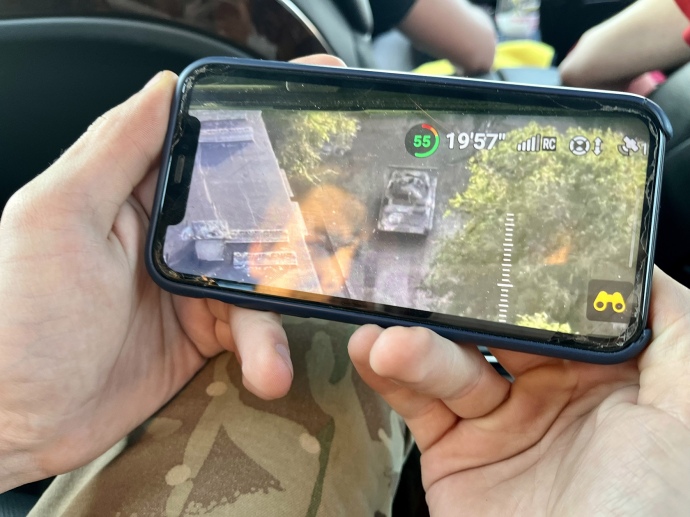
Who is fighting against the Ukrainian army in the Luhansk region?
For the time being, according to Oleksandr Martynenko, a scout from Svoboda [battalion], mostly militants from "LPR" [self-proclaimed Luhansk People’s Republic] - they wear dark-green uniforms and they are in fact cannon fodder on the battlefield. Special squads kill members from "LPR" [self-proclaimed Luhansk People’s Republic] if they refuse to attack Ukrainian positions. The only way for them to survive is to surrender.
There is also the Rosguard [this is the main military force of the Russian Federation] - they wear light green uniforms. The Kadyrovites [a Chechen paramilitary group supporting the Russian Armed Forces - ed.] are always dressed in black, but they, like the Marines and paratroopers, have not been seen in this area.
[The Ukrainian] Intelligence notes significant fatigue in the Russian and "LPR" military in the Luhansk region over the past three months.
"The place where the fate of Donbas is being decided
In one of his last video addresses, President Volodymyr Zelenskyy called Sievierodonetsk the place where "the fate of Donbas is being decided."
This is the reality to some extent - this city currently has the highest concentration of troops and attempts of the military on both front lines to destroy each other. As Kuzyk says, "we have to persevere here."
However, rationally, the defenders of Sievierodonetsk have a more down-to-earth job to do. The first, political and strategic, is to prevent the Russians from celebrating the capture of another city in the Donbas. The second is to pull back the part of invaders’ force to allow the Armed Forces of Ukraine to counterattack in the Kharkiv and Kherson regions.
In Sievierodonetsk, it is difficult to "decide the fate of Donbas", because important logistics routes are not intersected there. Moreover, the city is located geographically on a low bank of the Siverskyi Donets river.
Lysychansk, which stands on the other side of the river, is considered to be a location more favourable for defence and potential counterattack. This is also understood by the Russians, who are already actively burning it down using their missiles and artillery.
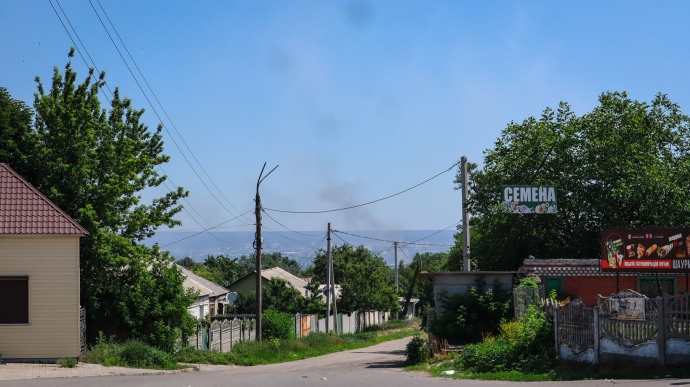
Due to the high intensity of the fighting, it is currently difficult to predict the outcome of the battle for Sievierodonetsk. Svoboda battalion defenders, according to Kuzyk, are ready both to attack and to maintain the defence or, by manoeuvring, to retreat. There are currently no reasons not to trust the military leadership.
Volodymyr Nazarenko, Kuzyk's deputy for combat issues, talks about three possible scenarios.
The first is that Ukrainian defenders push the Russians out of the city and, after receiving heavy weapons, go on the counterattack.
The second is that the Ukrainian military retreats from Sievierodonetsk, after which the Russians begin storming Lysychansk, but due to the "strong flow" of the Siverskyi Donets river, it will be quite difficult for them to do so.
And the third, intermediate one - street fighting will continue in the city.
When asked whether Ukrainian soldiers could be encircled in Sievierodonetsk, Nazarenko, who led a group of fighters out of Debaltseve in 2015, said: "They have been saying for a month and a half that they want to seize Sievierodonetsk! What kind of encirclement can it be?"
However, he adds that he is actually a little nervous about it, because in Debaltseve they also said: "Yes, everything is under control, there will be no encirclement. " And then: "Well, we are sorry, this is what happened."
***
A few days after arriving from the Luhansk region, one of the fighters of the Svoboda battalion wrote a message to Ukrainska Pravda journalist:
"If you remember, a cheerful man with a beard lived near the place where you slept, - today he died from a sniper bullet."
And a few days before Ukrainska Pravda reached the battalion, another fighter was killed in Sievierodonetsk. On his comrade’s weapon there is a sign inscribed in white letters: "Every bullet will be about you, brother."
These particular facts reveal the price of the battle for the city of Sievierodonetsk, once home to 100,000 people. The most expensive prize of this war.
Olha Kyrylenko
